Bakerville
670 Drift Road, Westport, MA
Anne and Bob Baker purchased the main house, also known as the Tripp House, and the land from John Souza in 1967. The Tripp House, c1721, most likely started as a half house before the other side was added. In 1967, the Baker's moved the Tripp House to a more desirable location on their property. After the move and while the main house was being restored, the Baker's acquired additional building structures: the ell to the house (aka Lollypop House), a shed, a slaughter house shed, the boat shop, a barn, and the Cole House.
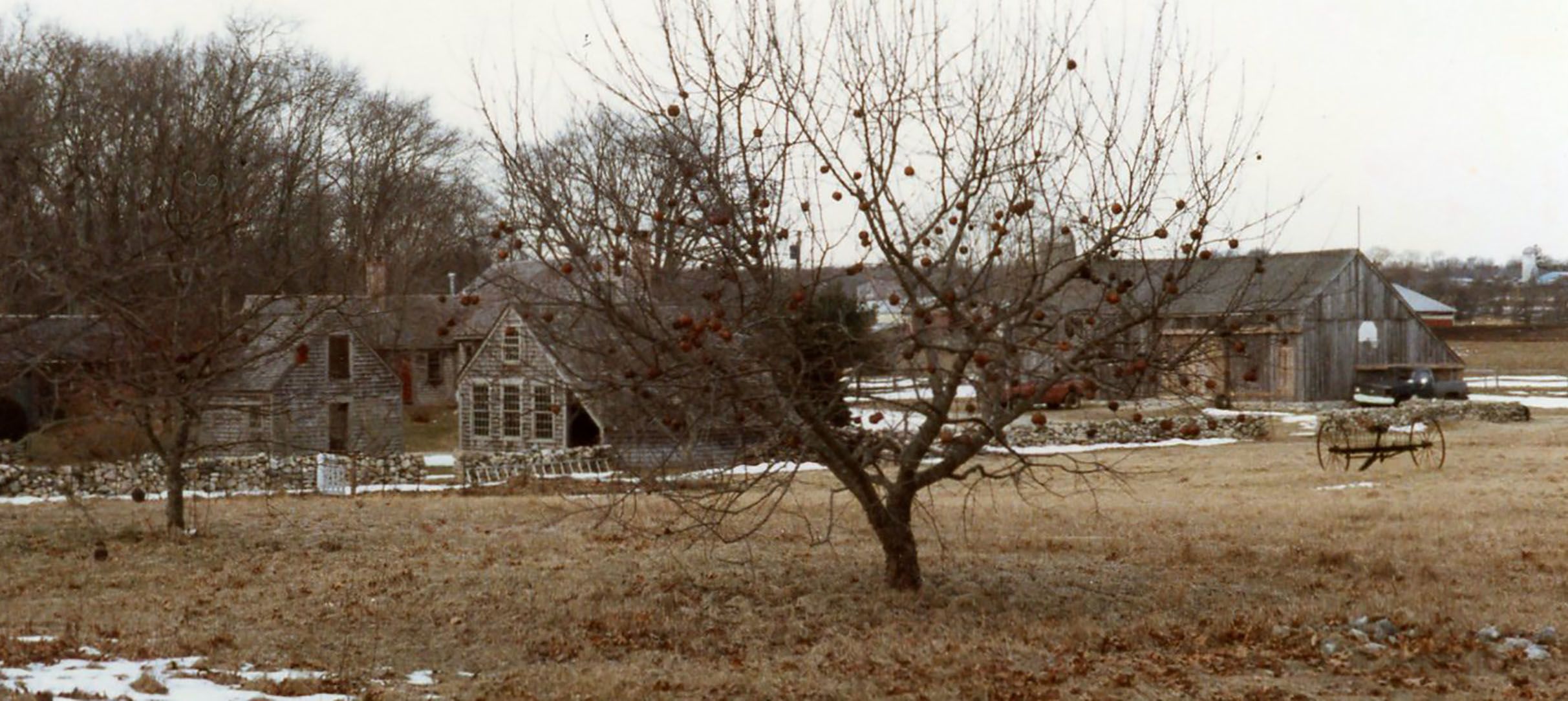
Photograph showing the Tripp House, c1721, in its original location at 670 Drift Road before it was moved and restored. Because the land surrounding the main house had been stripped of it's gravel for a state project in 1962, the Baker's decided to move the house to a more desirable location on the property.
July 1967 - Moving the Tripp House down from the hill, into the barnyard and through the field to its new location.
The Tripp House, restored and in its new location on the Baker property. This house became the main house at Bakerville. To see more images of the house, the house move, and the seven additional structures at Bakerville go to https://docs.rwu.edu/baker_bakerville_house/
Moving the Tripp House, July 1967
In July 1967, the Baker's hired Metropolitan Building Movers to move the main house across the field to a spot at the edge of the woods and next to a brook. Photographs of the move are below. Read about the details of the move in the chapter entitled Moving in Baker's book Collecting Houses: 17th Century Houses - 20th Century Adventure written in 2002.
Click on an image to open up a slide show.
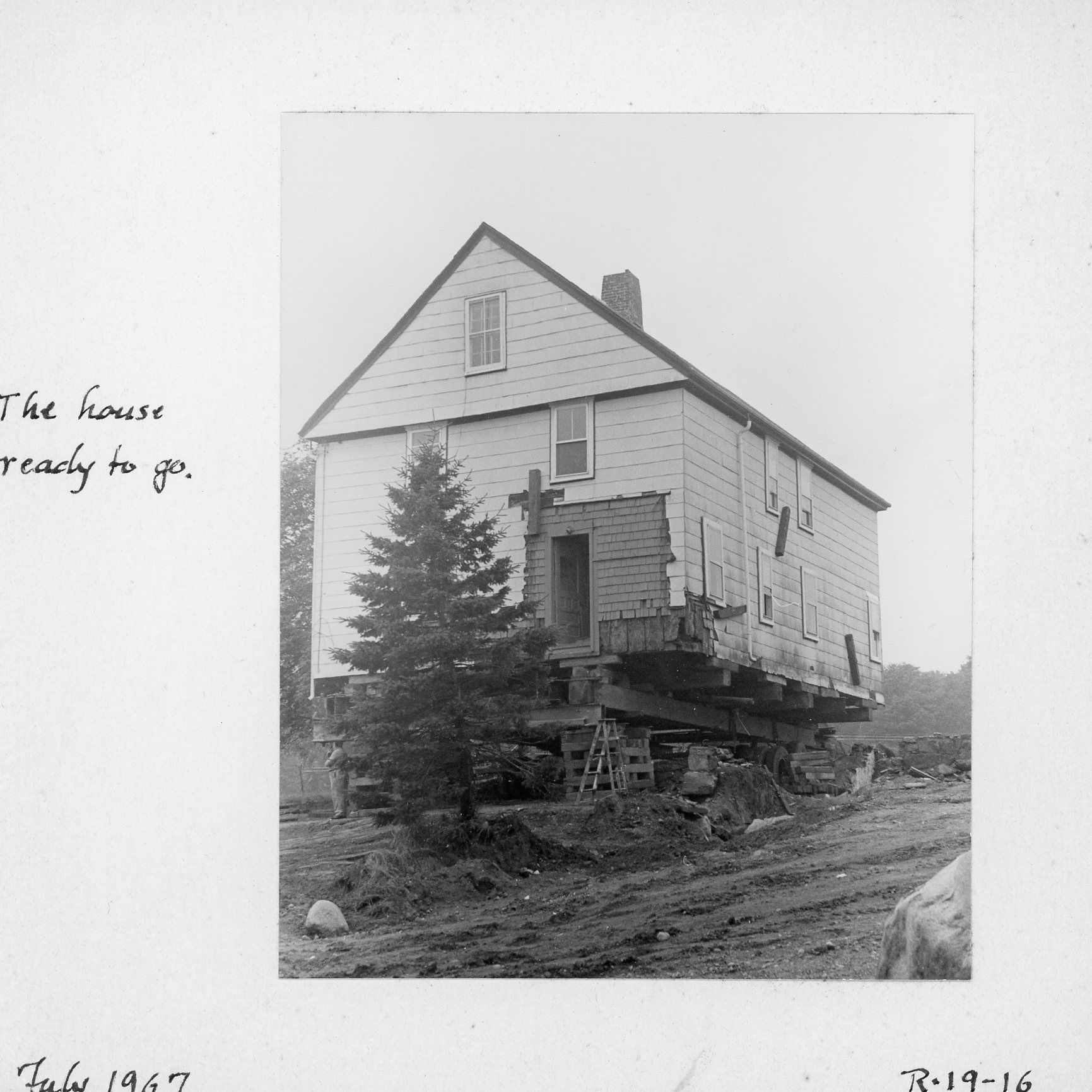
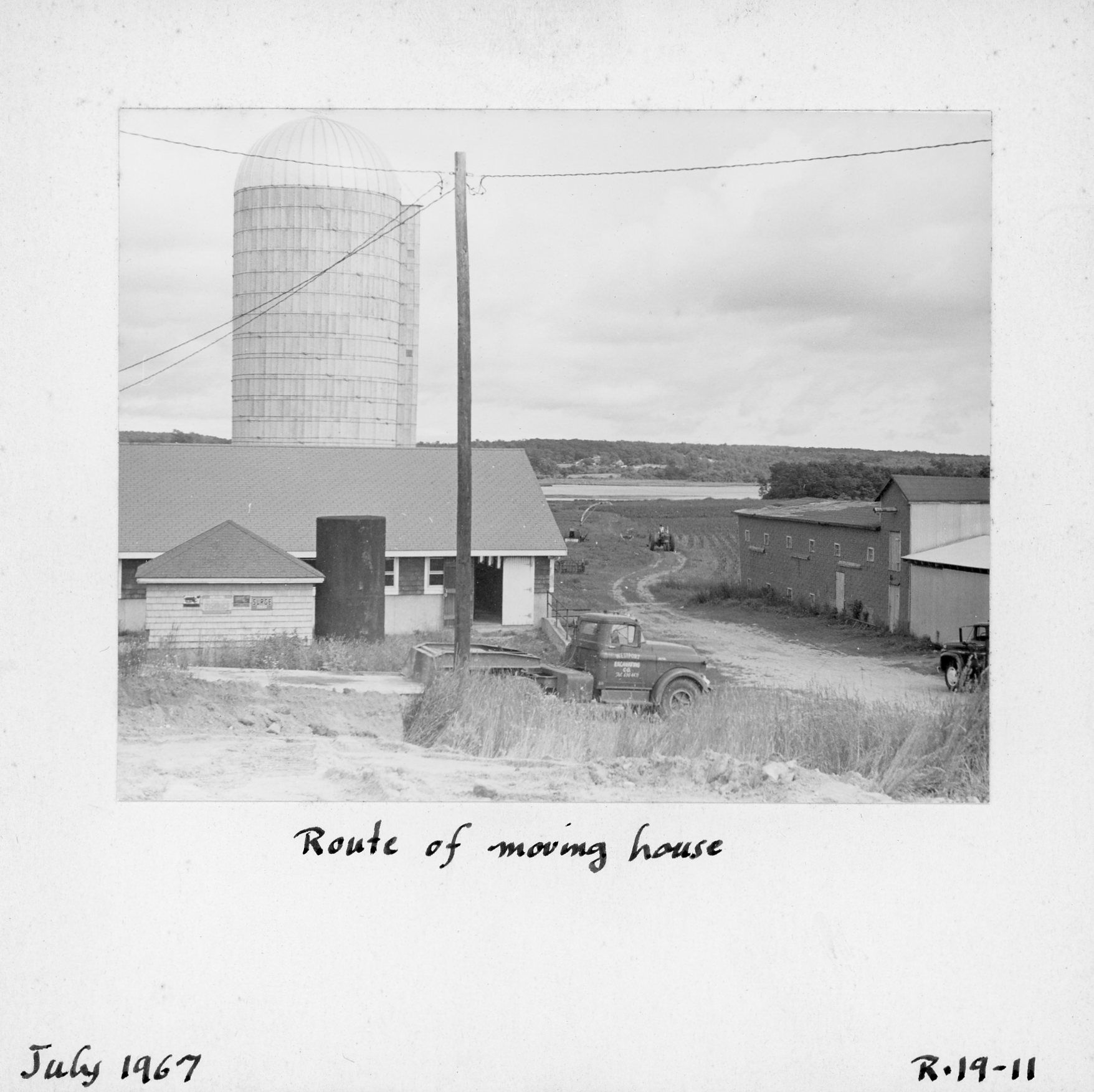
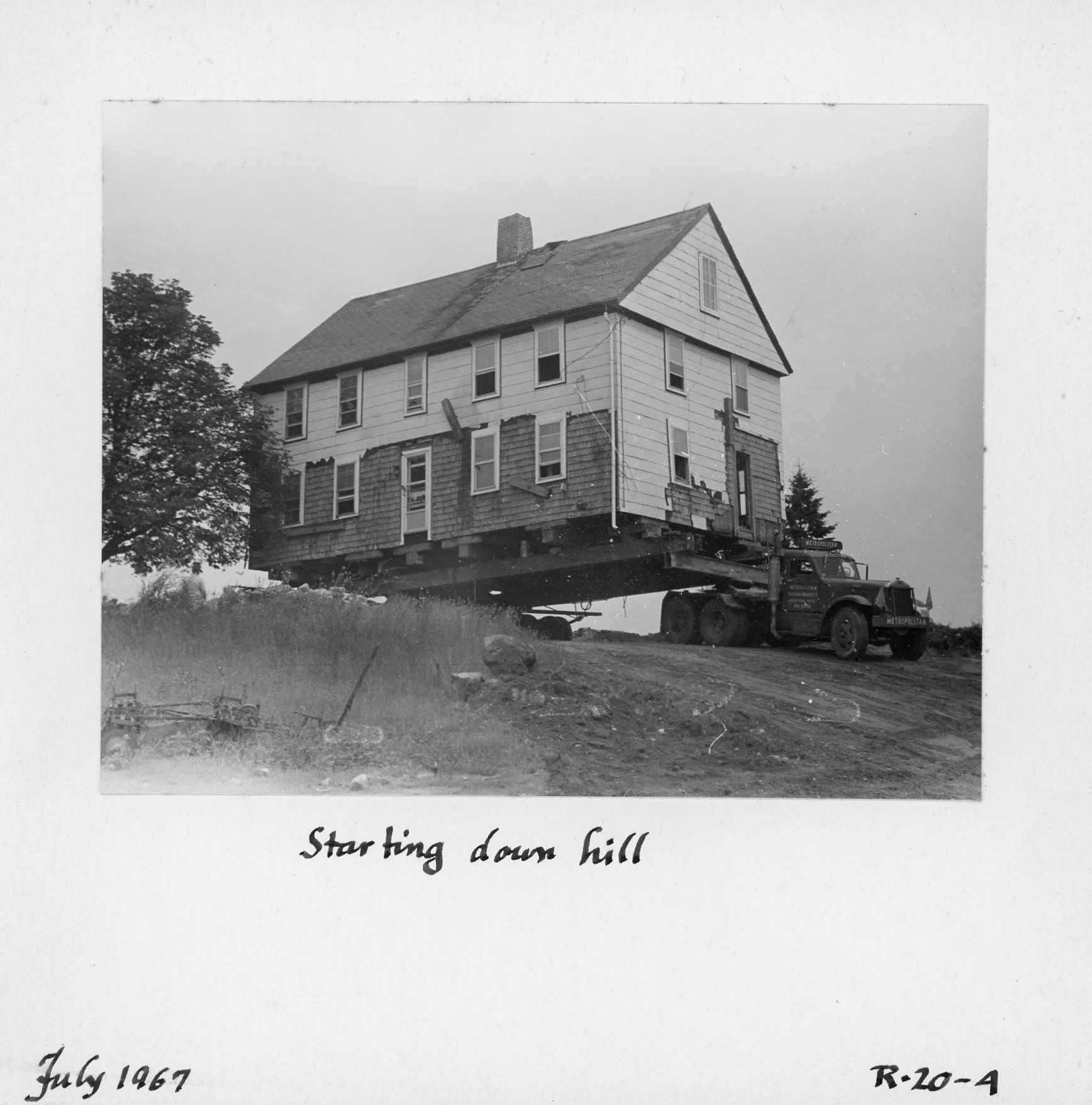
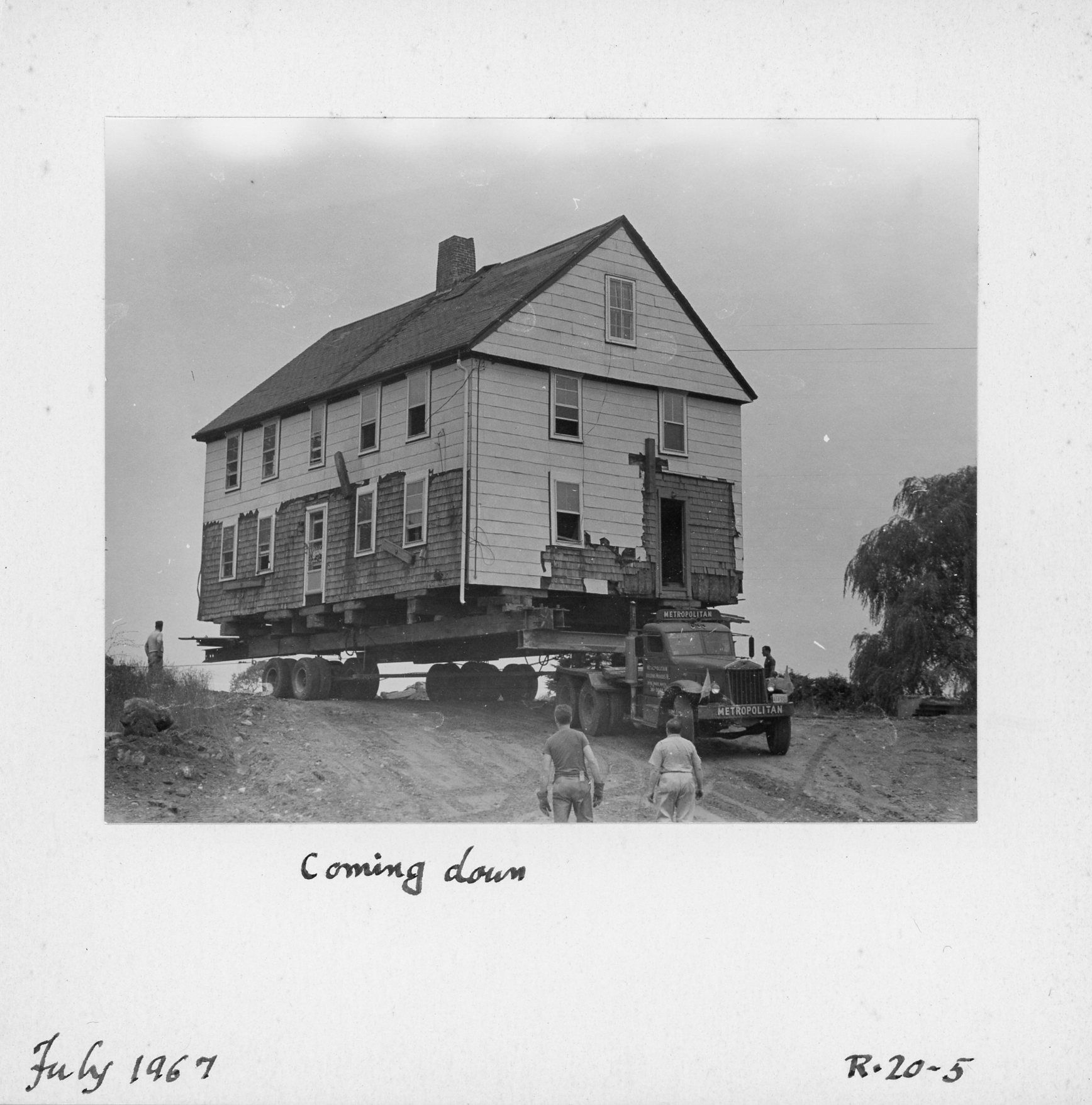
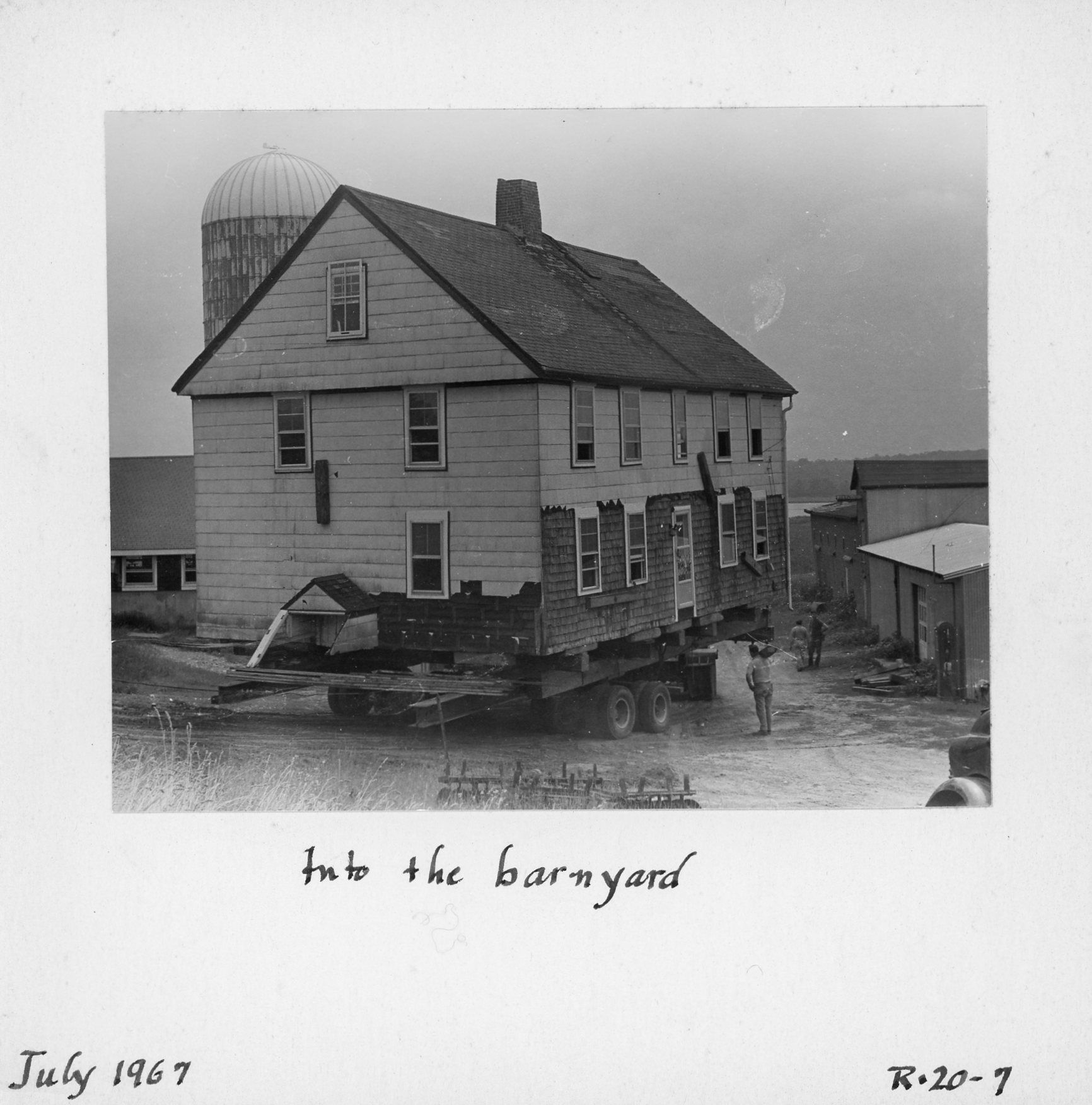
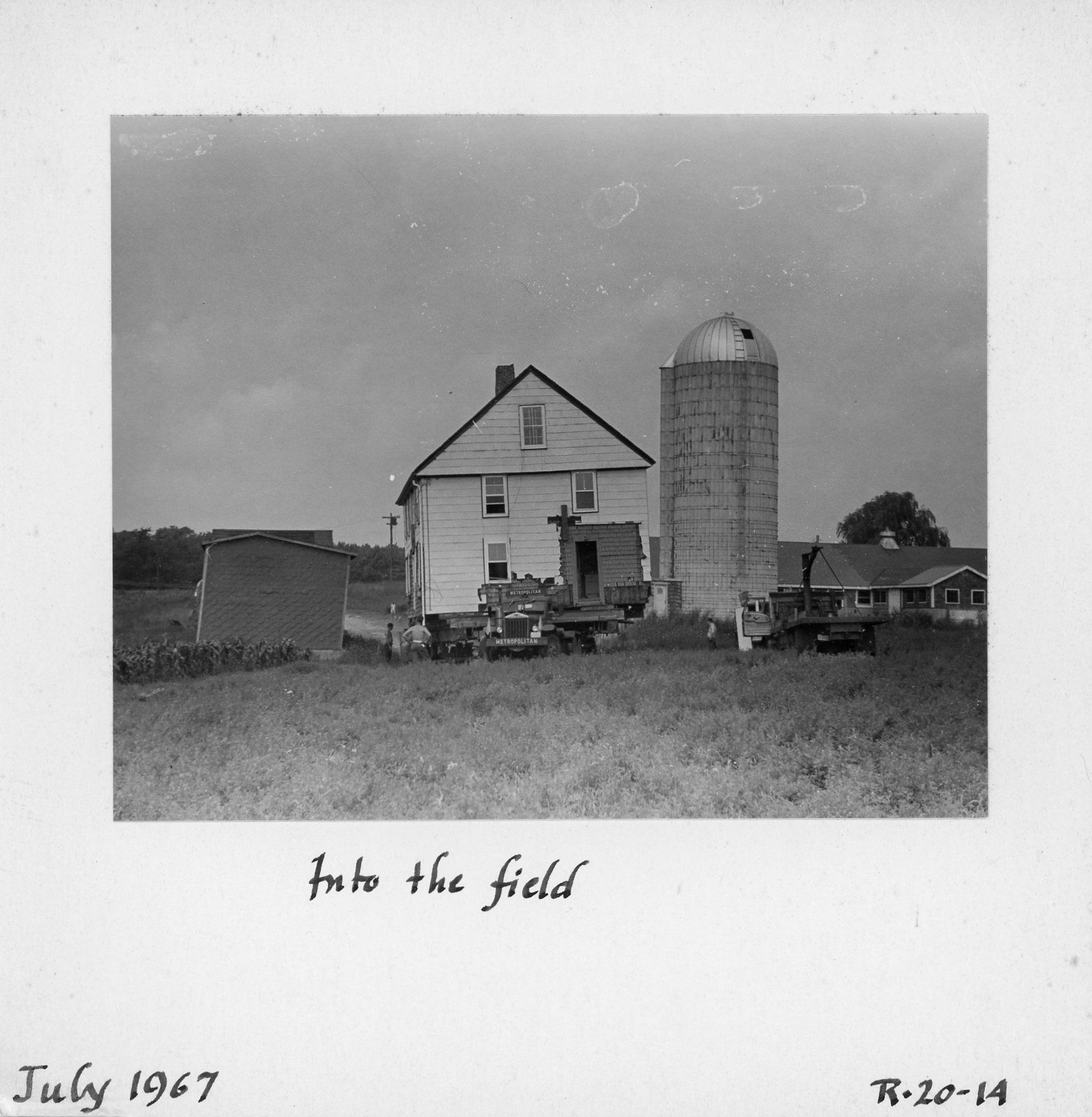
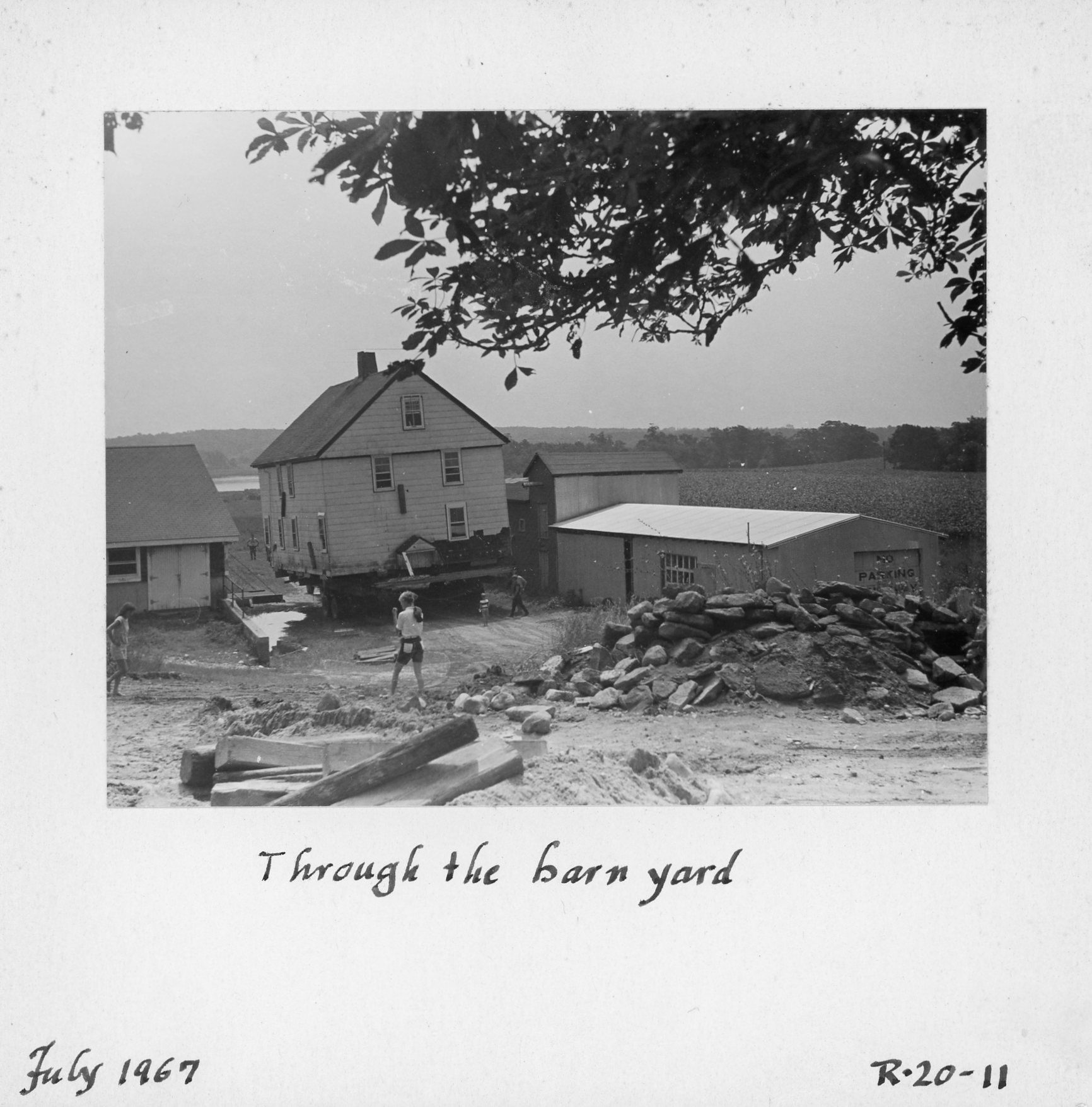
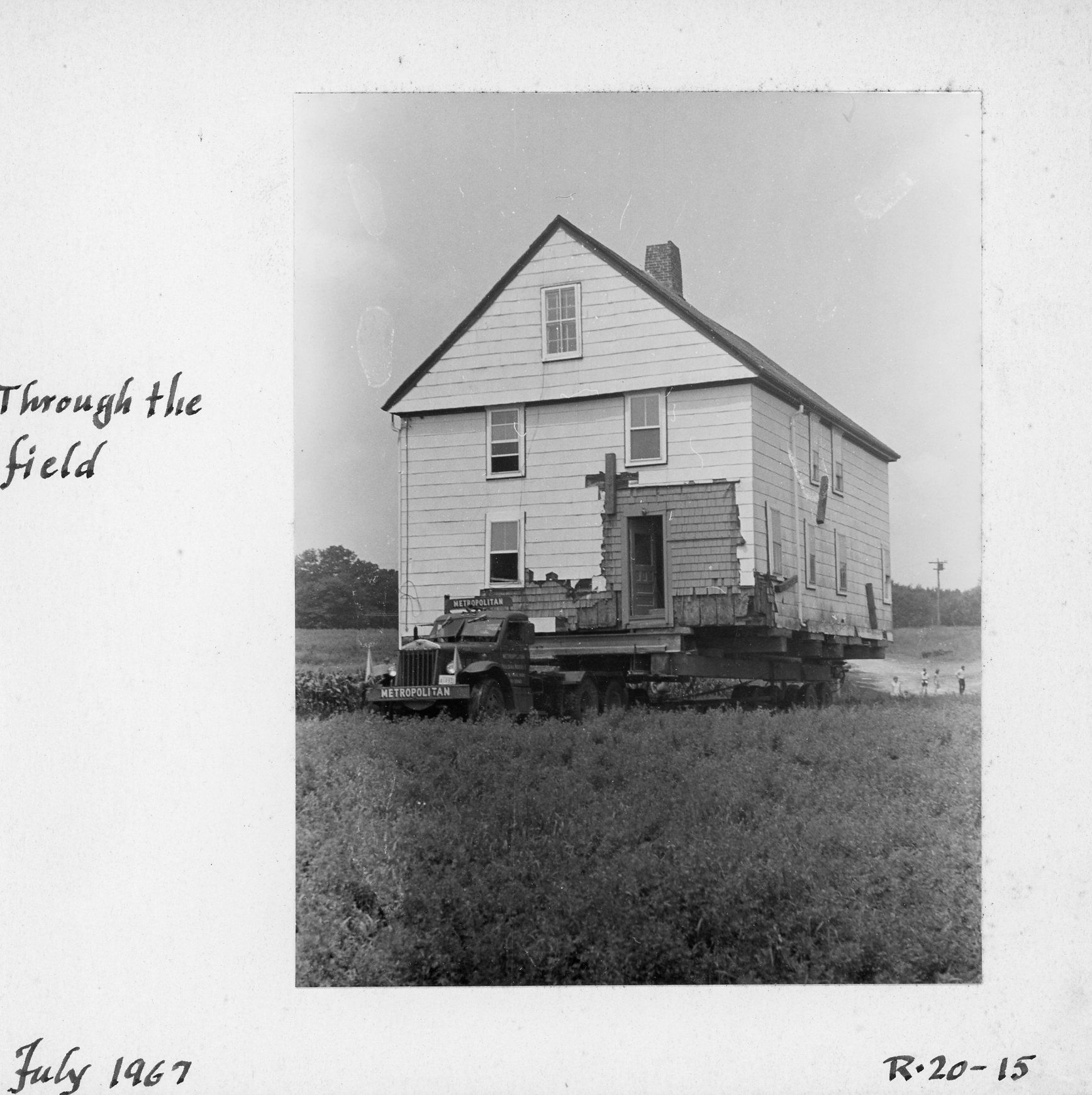
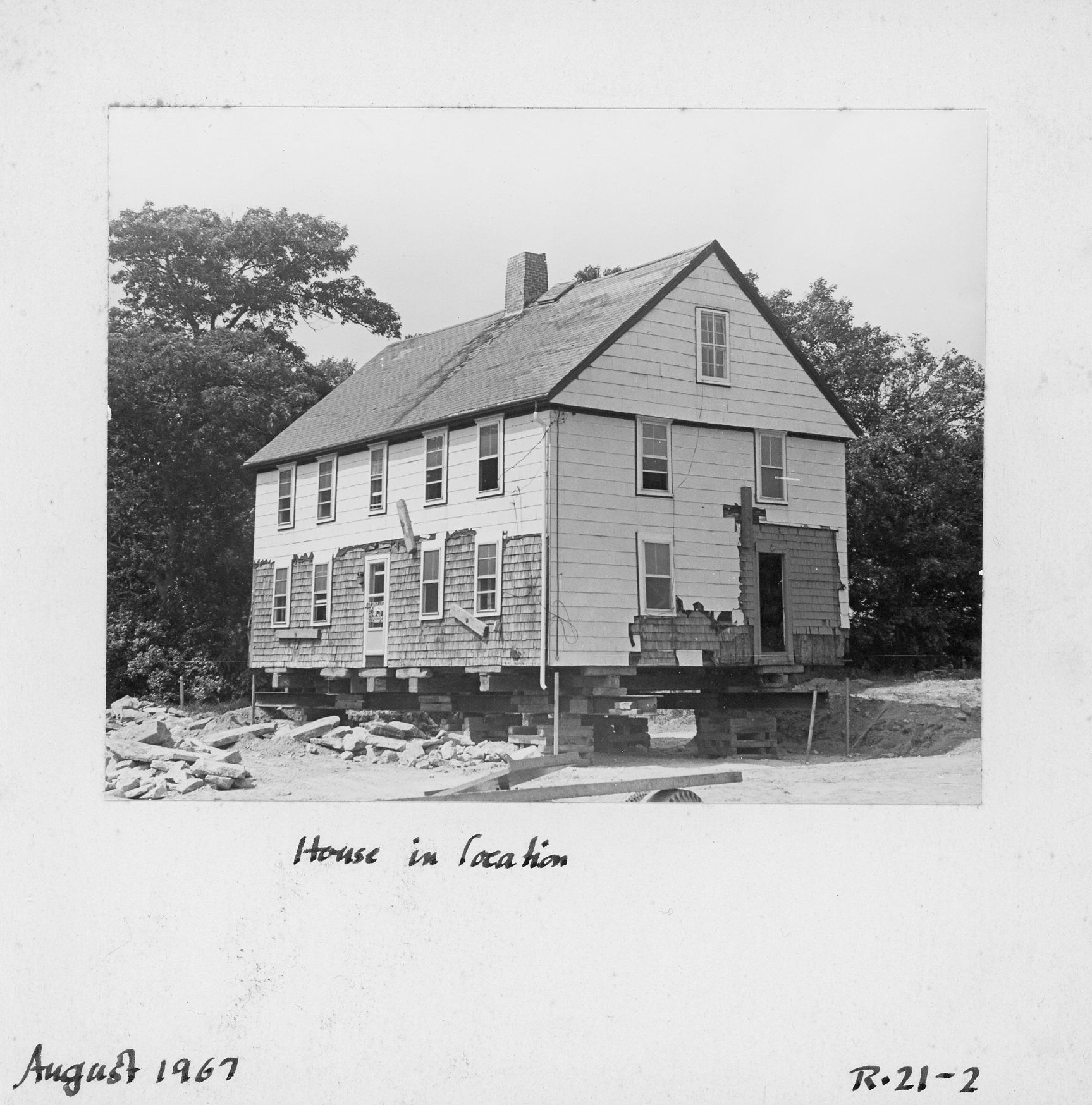

House blocked and ready to go, July 1967
House blocked and ready to go, July 1967

Moving Route
Moving Route

Starting down the hill
Starting down the hill

Coming down the hill
Coming down the hill

House moving into the barnyard, July 1967
House moving into the barnyard, July 1967

House moving into the Field, July 1967
House moving into the Field, July 1967

Moving through the Barnyard, July 1967
Moving through the Barnyard, July 1967

Through the field, July 1967
Through the field, July 1967

House in new location.
House in new location.
The Buildings at Bakerville
After the move and while the main house was being restored, the Baker's acquired additional building structures: a shed, a slaughter house, the ell to the house, the boat shop, a barn, and the Cole House.
The Briggs Shipbuilding Shed originally located on Brick Kiln Lane in Hanover, Massachusetts was the second building moved to 670 Drift Road. It had been an outbuilding belonging to Alden Briggs, a shipbuilder on the North River during the 1700s. The Bakers dismantled the shed board by board and loaded it in a pick-up truck, then re-erected it for immediate use as a storage shed for tools, etc. while restoring the house.
In 1957, Bob Baker moved The Lollypop House on wheels from its original location on Fisher Road, Dartmouth MA to Cape Bial Lane at Westport Point where he used it as a workshop. In 1969, Baker moved it again on wheels to 670 Drift Road and attached it to the main house as an ell.
The slaughter house building came from Cranston, Rhode Island. It was built c1790. Anne was hired by the Newport Restoration Foundation to dismantle it so they could use the building as part of a permanent exhibit of a 1750s working farm. However, the Foundation cancelled their plans and offered the slaughter-house to Anne Baker for a dollar. The Baker's put it up and added a lean-to across the back.
The Boat Shop, originally a one-story house, c1790, was dismantled and moved from Russell Mill Road in Dartmouth, Massachusetts in order to be used as Bob Baker's Boat Shop. It was perfect for a shop because of the dimensional joists that spanned the width leaving the first floor free of partitions.
The Barn, c1790, was moved from Gloucester, Rhode Island. Anne needed a place to keep the house parts she accumulated as she worked on restoration projects. Steve Tyson moved the house for her and erected it at 670 Drift Road with a new lean-to addition on the back. The original barn was smaller in length and had been added on to at an earlier date.
The Cole House was added to Bakerville in 1977. Baker found this small, one-story, 17th century Rhode Island stone-ender on Warren Avenue in East Providence, Rhode Island. It's original location before coming to East Providence is unknown. Although the stone-end on this house had been removed years ago, its frame was still in perfect shape. The house had an exposed chamfered frame with vertical siding, splayed corner posts and a summer beam perpendicular to the firebox. It proved impossible to move the house intact so Baker's crew took it apart in sections and then put it back together at Drift Road. In her book, Collecting Houses, Anne Baker describes the house: The house sits in a quiet place of its own--across from the brook, sheltered by a canopy of trees. It has no practical purpose. It's like a chapel in the woods, a place to go, a place to sit quietly, a place were the past is part of the present.
Sources:
"Bakerville: Pre-print of Chapter "Fitting In" from Collecting Houses by Anne W. Baker" (2023). Documentation. 179.
https://docs.rwu.edu/baker_documentation/179
"Bakerville: Anne Baker's Letter to Elizabeth Marcus with Room Descriptions and History" (2023). Documentation. 174.
https://docs.rwu.edu/baker_documentation/174
"Bakerville: Anne Baker's Descriptions for Print Archive Folders" (2023). Documentation. 177.
https://docs.rwu.edu/baker_documentation/177
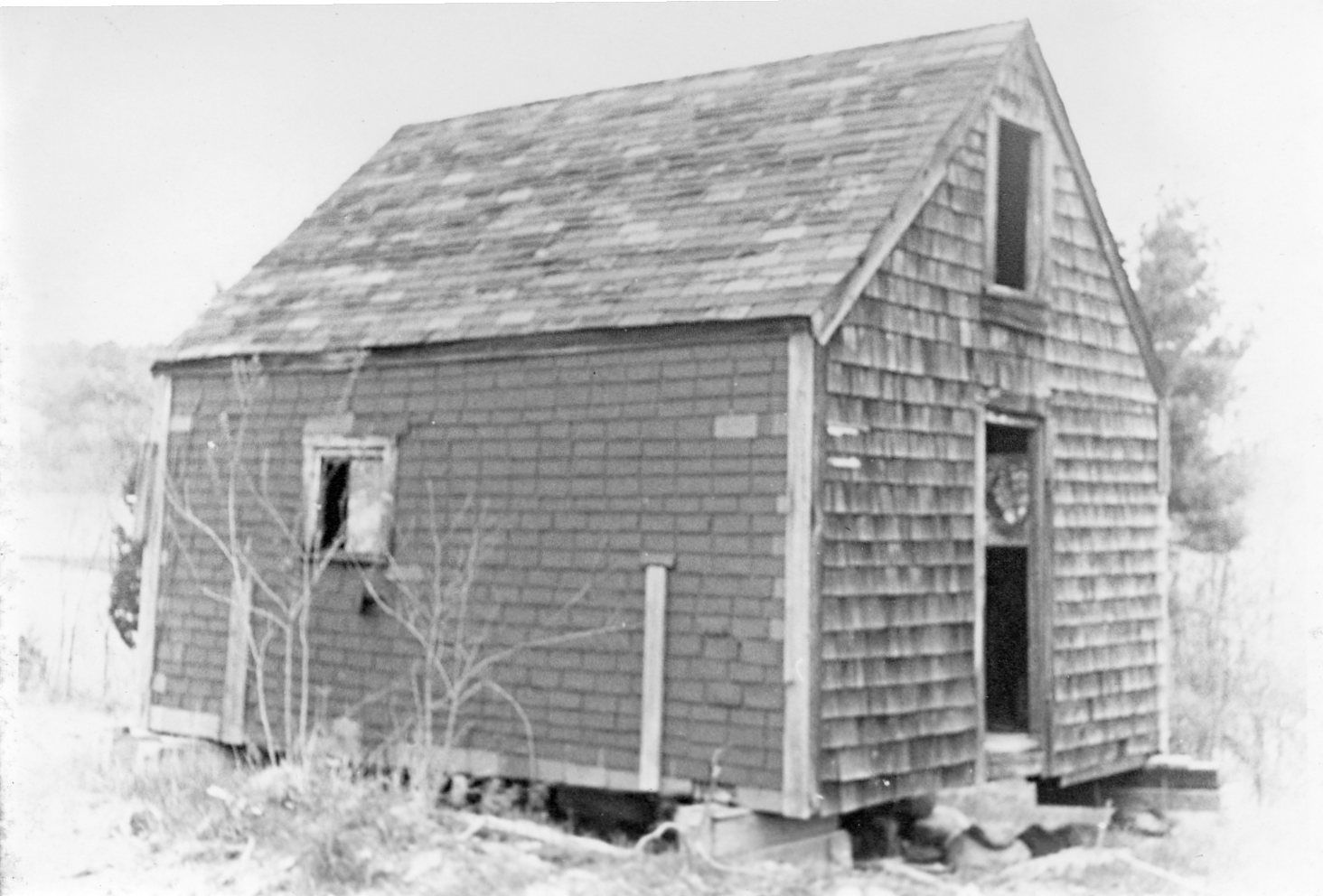
Briggs Shipyard Shed
Briggs Shipyard Shed

Lollypop House
Lollypop House
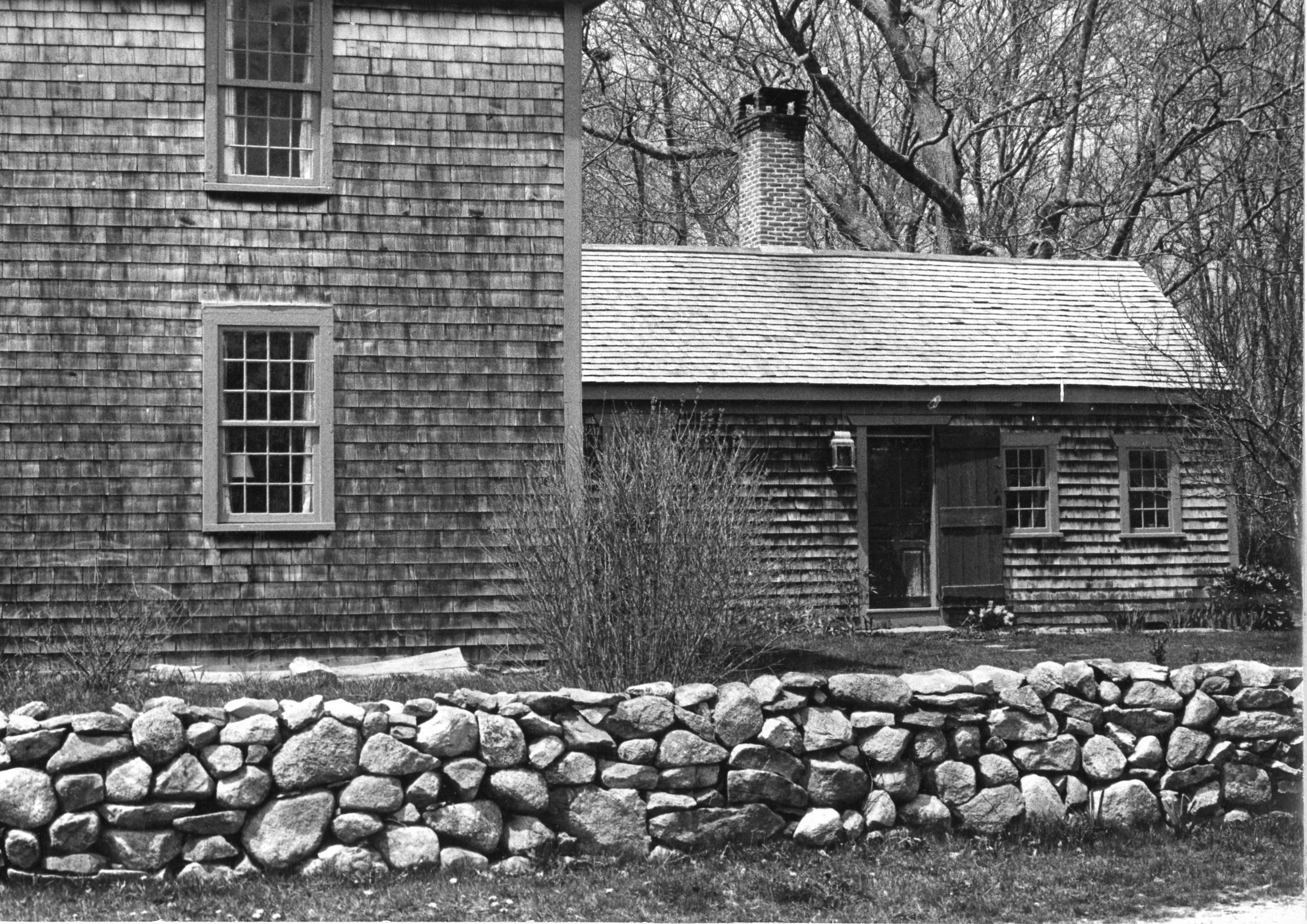
Lollypop House attached as an Ell to Main House
Lollypop House attached as an Ell to Main House
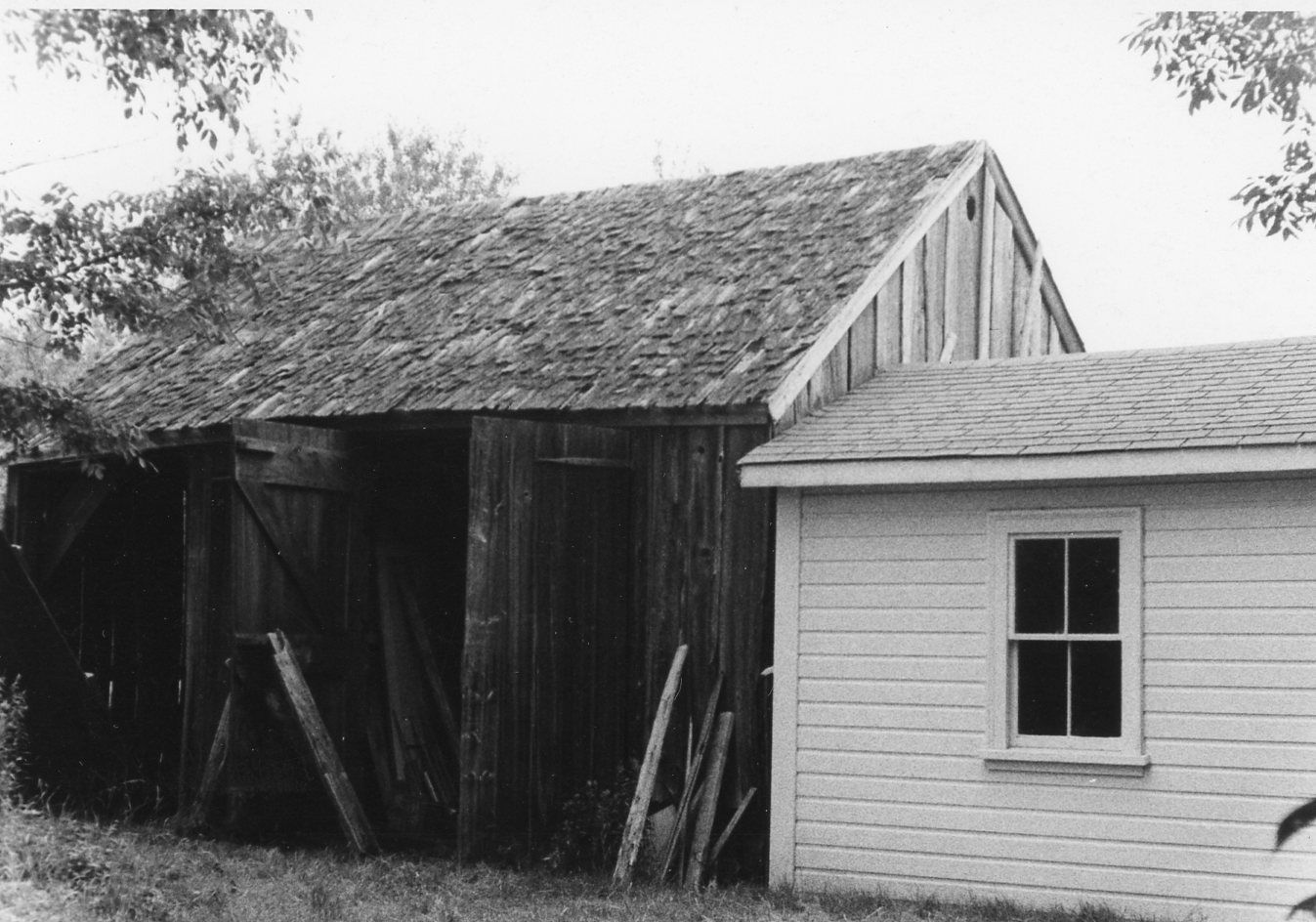
Slaughter House in its Cranston Location
Slaughter House in its Cranston Location
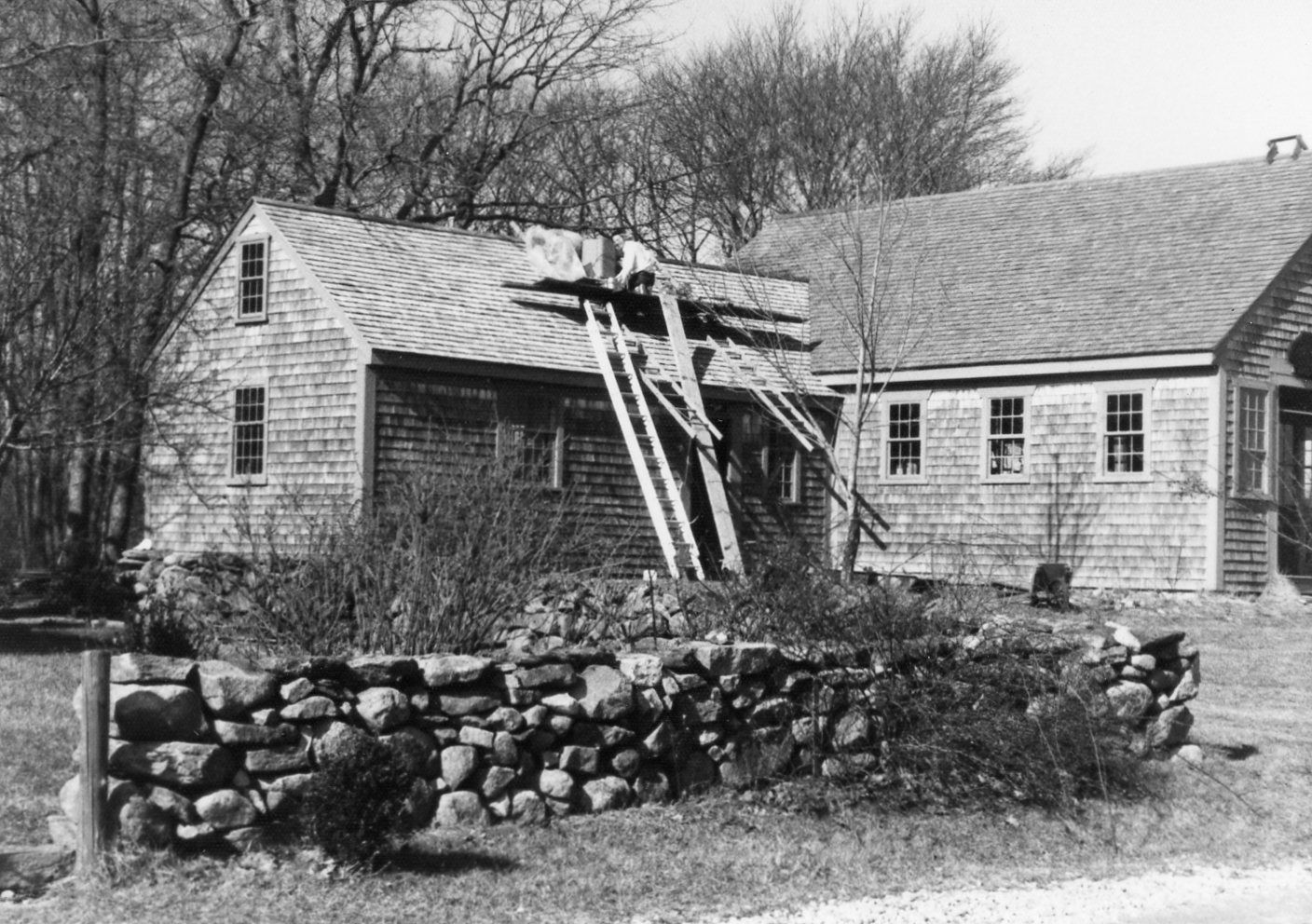
Boat Shop
Boat Shop
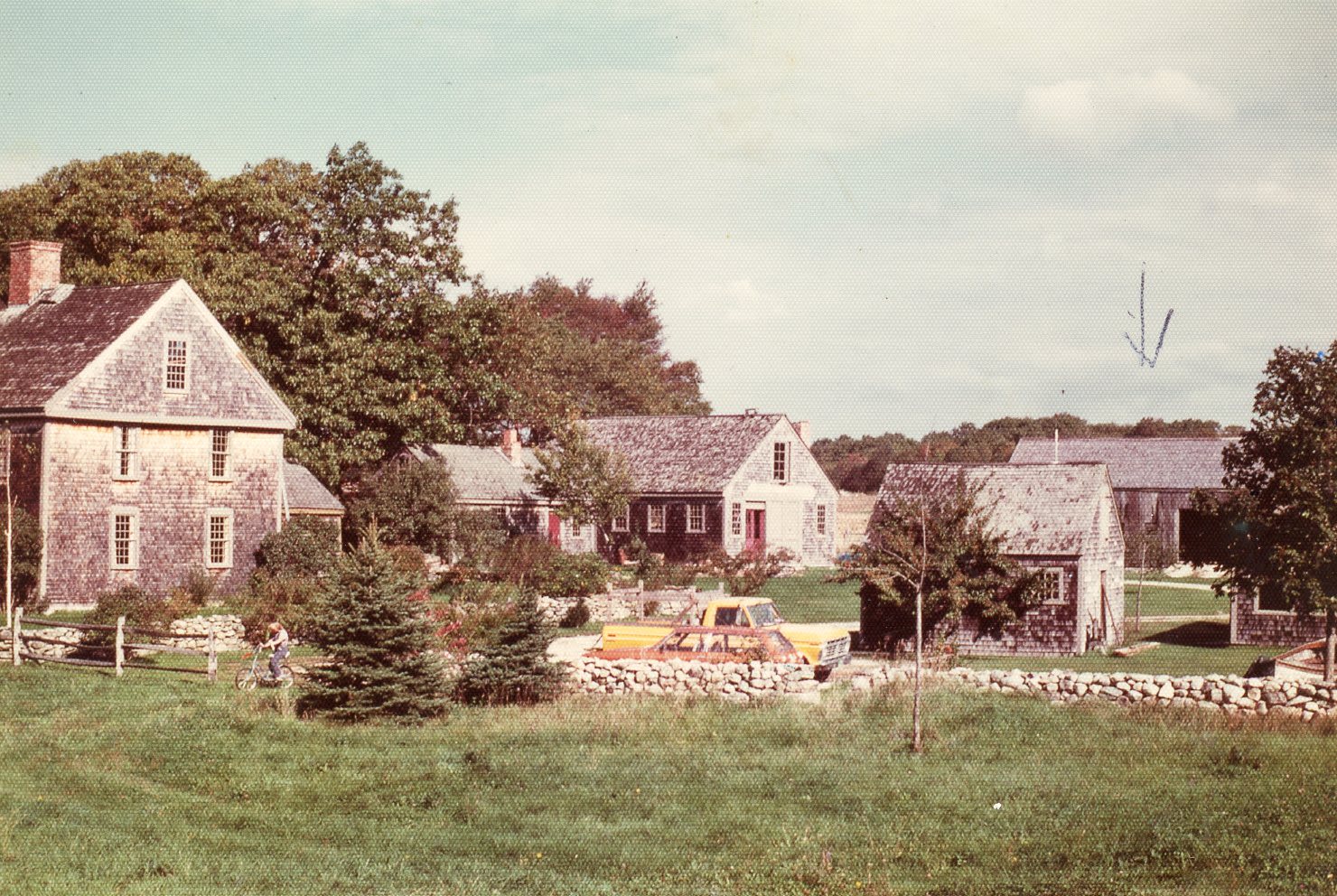
Arrow shows the location of the Barn at Bakerville
Arrow shows the location of the Barn at Bakerville
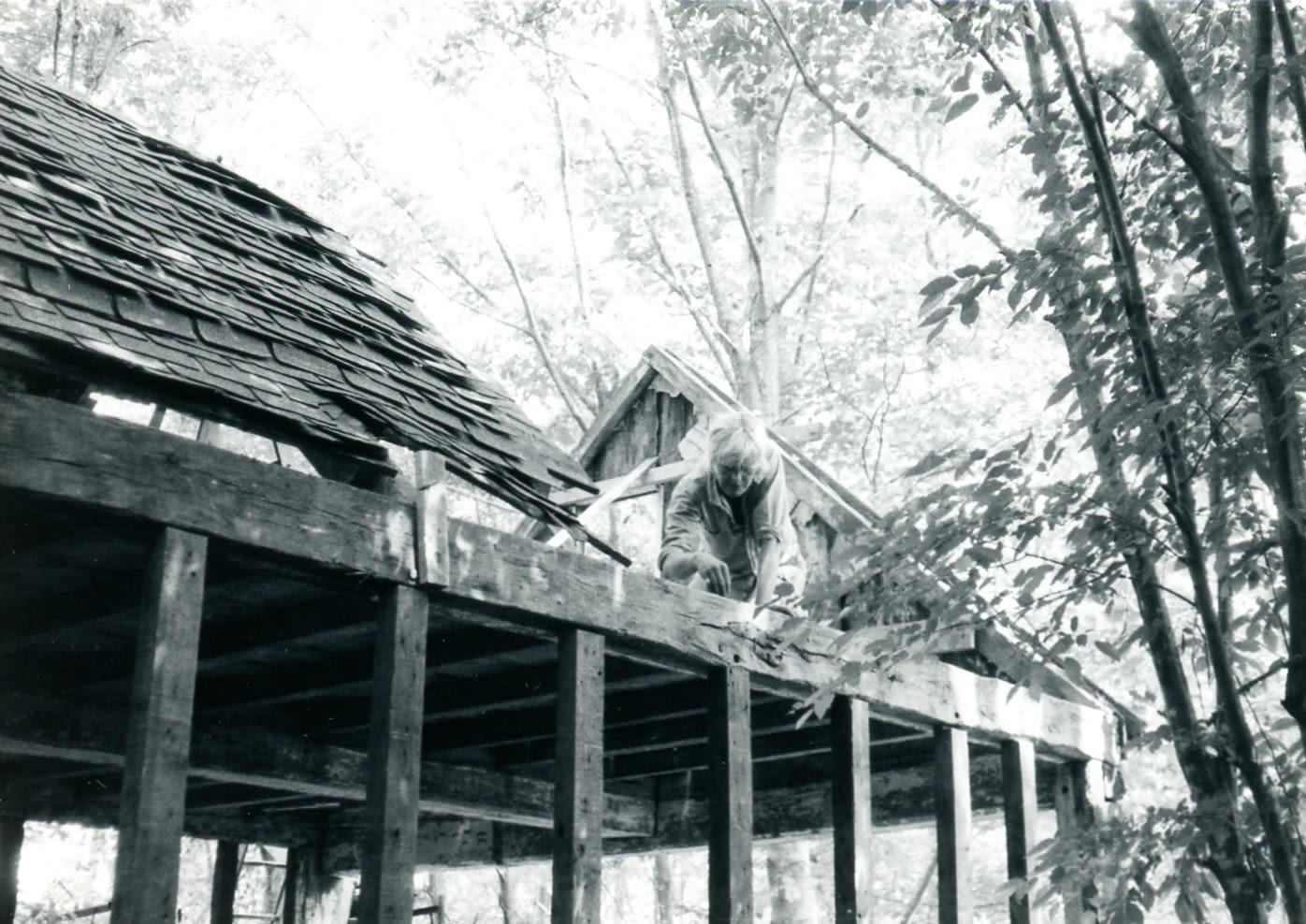
Putting up Cole House
Putting up Cole House
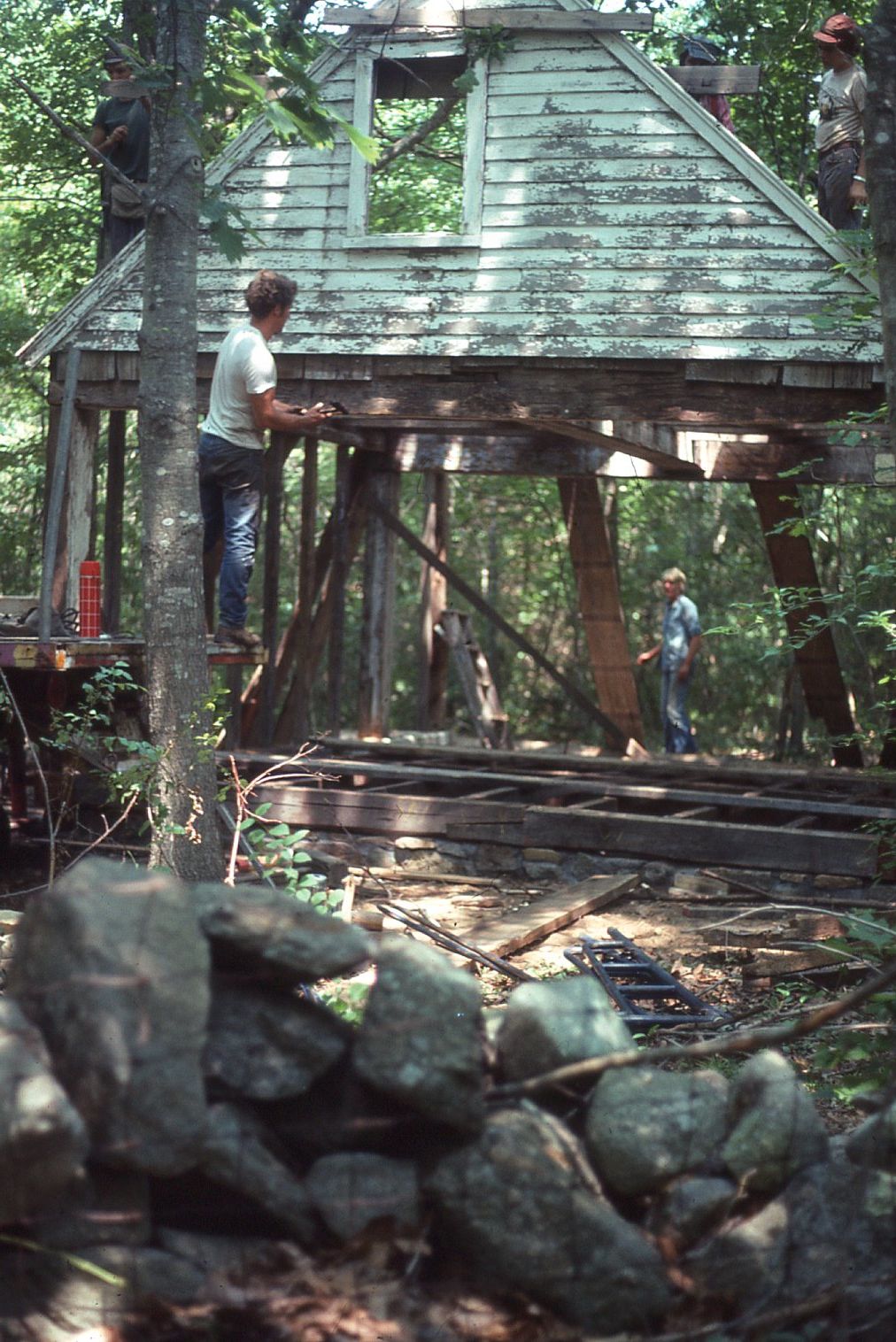
Putting up Cole House
Putting up Cole House
